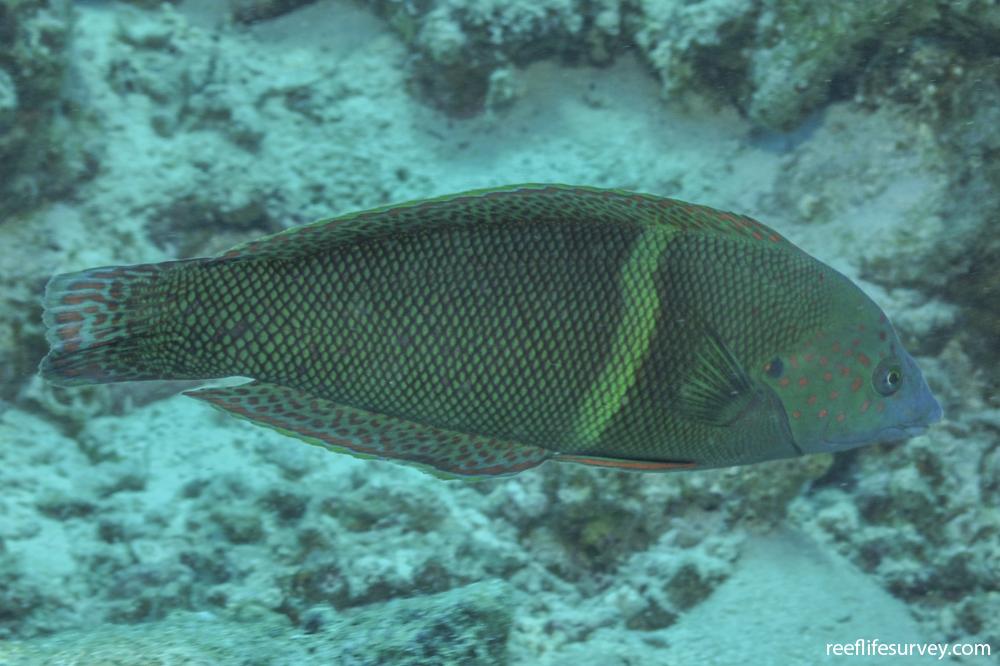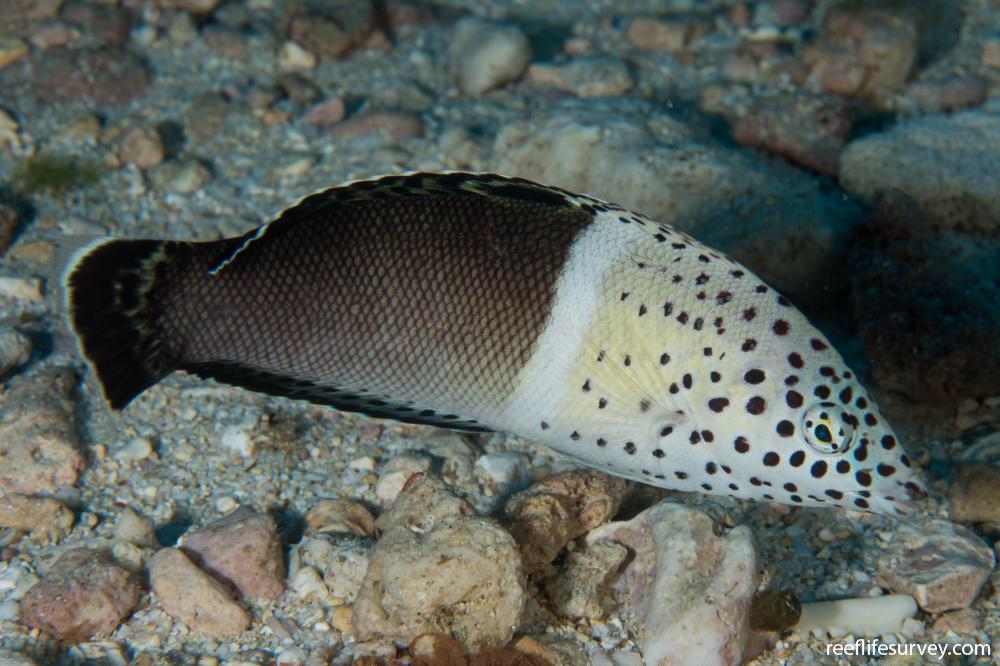Coris aygula
Clown coris | Clown Wrasse | False Clownwrasse | Humphead Wrasse | Red-blotched Rainbowfish | Redblotched Wrasse | Twinspot WrasseSimilar Species
Same Genus
Distribution
Temperate Australasia, Tropical Indo-Pacific
Description
Males with dark green body, hump on head, one or two light body bars behind pectoral fin and a ragged tail margin. Females have light grey head and fore body with dark red spotting, white body bar dividing fore body from dark rear body, pointed head profile and spotted dorsal and anal fins. Juveniles light grey with two bright orange saddles on back with a black ocellus on dorsal fin above each, and black spots on head and fore body.
Information
Max Size: 120 cm
Sea Temperature Range: 20-30.6°C
Depth: 2-30 m
Habitat Generalization Index: 21.94
Also referred to as the SGI (Species Generalisation Index), this describes the habitat niche breadth of the species. Species with values less than 15 are found in a relatively narrow range of reef habitat types (specialists), while those over 25 may be found on most hard substrates within their range (generalists). Learn more here.
Conservation and Rarity
IUCN Status: Least Concern
Occurrence: Frequent (12.8% of sites)
Occurrence describes how often the species is found on surveys within its distribution. It is calculated as the % of reef sites surveyed by RLS divers across all the ecoregions in which the species has been observed
Abundance: Few (3 per transect)
Abundance is calculated as the average number of individuals recorded per RLS transect, where present.
Edit by: Joe Shields
































